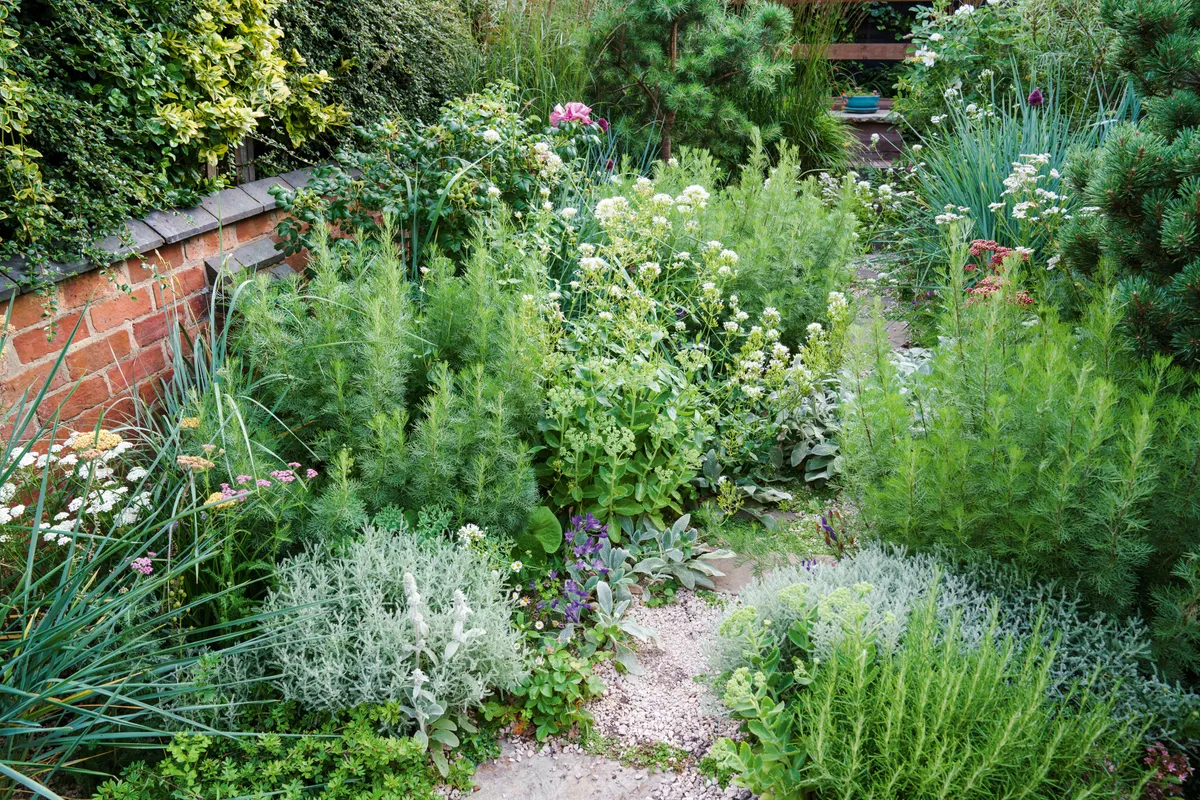Ula Maria's award winning garden for Tatton Park in 2017 found its final home at her father's small garden plot in Northampton.
Creating this pocket-sized private garden was an organic process. It was a family affair that involved regular get togethers with her father and her brother, who erected the pergola, built the boundary fencing, and laid the path and timber paving tiles for the patio.
More on privacy and screening

The tiny plot (just 12m by 4m) is behind her father’s terraced house – a typical Victorian red-brick building, overlooked from all angles. Although the original boundaries of low brick walls offer little privacy, they partially allow an opportunity to ‘borrow’ next-door’s shrubs. To bring about more privacy, the walls were fitted with screens of slatted pine timber providing height and seclusion balanced by a sense of spaciousness from light filtering through the slats. Here are key tips on how to create a private garden.
Head to our full feature to discover more about the garden.
How to make your garden more private
An enclosed pergola with a roof and sides helps to minimise being overlooked from behind, above and either side of the property. If situated away from the house, as here, it also creates a destination to encourage journeying through the garden.

Planting tall grasses, such as Calamagrostis x acutiflora ‘Karl Foerster’, in front of the pergola helps to create the feeling of a cosy den and a sense of enclosure.
Slatted timber screens raise the height of the boundary walls enclosing the garden while allowing light to filter through.
A careful choice of plants intensifies the sense of privacy in the urban environment: taller salix along the boundaries, medium-sized evergreen shrubs and small, slow-growing
trees, such as the evergreen Scots pine, Pinus sylvestris ‘Watereri’, provide year-round structure and cover.